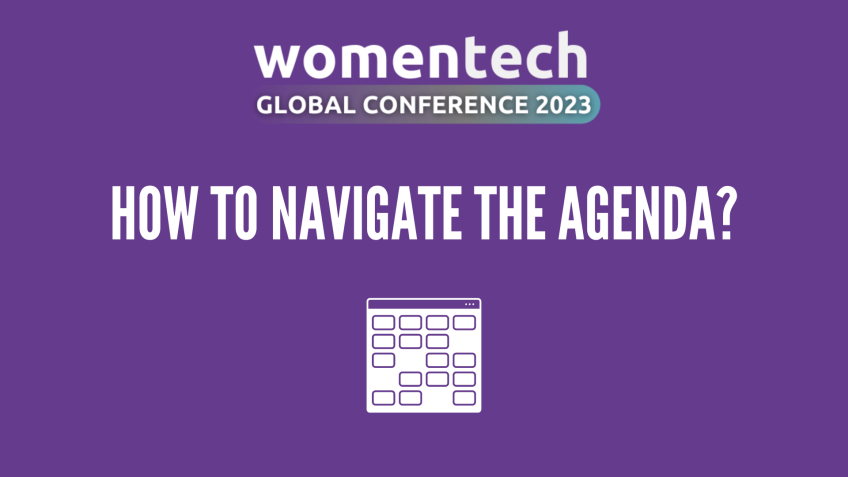
With the WomenTech Global Conference just around the corner, we wanted to support you, our 600+ speakers, in the preparation of your presentation or workshop. We created a three-part series and in this guide, you can find tips on how to:
-
Give an Engaging Virtual Presentation - because it's different to talk to a screen than a live audience
10 Strategies for Giving an Engaging Virtual Presentation
Giving a virtual presentation as opposed to giving one in front of a live audience can be intimidating. It's a very different experience responding to an audience gazing through a computer screen and building a rapport when people are mostly muted and hidden.
However, there are strategies you can incorporate in your virtual presentation to make it engaging for your viewers:
1. Practice Your Presentation, Twice:
Do not let the first time you use the software and your own tech be when you're presenting in front of the conference's guests. One great thing you can do is record yourself presenting so that you can see what you look and sound like; you can check on your energy levels, body language, speed, and pauses, etc.
Specifically for the WomenTech Global Conference, there will be rehearsals for the speakers to get to know the platform, so sign up and show up for those to ease your preparation. Also, you can check out some tutorials about the platform from its creator even before the rehearsals. You can experience what it's like for the attendees and the speakers to use it.
2. Consider Your Background:
Make sure that the place where you'll be presenting is not distracting. Check out what is visible in the background, and if there are too many objects, just remove them, so that people can focus on you and not on a pile of clothes in the back or something to that effect.
3. Minimize Distractions:
When you're speaking, turn off all notifications on your computer and smartphone. You don't want any incoming calls, texts, or emails interrupting you and your train of thought while you're trying to keep the attention of dozens, if not hundreds of people. The same goes for pets and family members. Also, if you'll be sharing slides, make sure that your desktop has only what's necessary open. If you want to have some notes on your screen, then maybe get an external screen for that purpose so that when you're sharing you're only sharing slides.
4. Test Your Audio and Your Connection:
Check your audio before your presentation and see what it sounds like. If it's not great, maybe invest in an external mic. Some people like wireless mics that will let them walk around when they present as if they were on an actual stage. It's a good idea to have a plan B for whatever audio you're using so that if one gives up, you can replace it with your phone, a headset, an internal mic, or some other creative solution.
If you think you're bandwidth might be low, check in advance and consider wiring up for the event, instead of using wireless.
5. Use Large Font Size:
Don't risk people missing your point because you typed the text in your slides too small. Better make it bigger to make sure it will be visible and readable on all types of screens. Also, pay attention to colors and contrast. If you're not sure it's all visible, you can always ask a friend to give some feedback.
6. Schedule Time for a Q&A:
Presenting online can be lonely. So take advantage of the chat and poll options on the platform. Factor time for questions and answers, and since you probably won't be able to answer every question, make sure to give a way for people to reach out after your talk and ask their questions.
7. Look Directly At The Camera:
Present as if you're talking to a person, an audience, not the camera; make "eye contact". Do not have the camera at one angle and you looking at another because it will be less engaging for the audience. It might help to imagine that you're talking to a real, specific person that fits the target audience.
If you have speaker's notes, put them as close to the camera as possible so that you don't look away when you're going through your main points. There are also apps with which you can configure a button on your keyboard to quickly mute yourself if you need to cough or have a sip of water.
8. Pay Attention to Your Lighting:
Make sure to see how you're lit up before your talk. Don't sit in front of a window because you'll end up as a silhouette. Your best option is to have some frontal lighting that will eliminate shadows in your face and thus shorten the distance between you and the audience.
9. Create A Feeling of Intimacy:
As we've mentioned, the camera does create some distance between you and the audience. Another way to connect with them and "get closer" is by using "you." When you speak, do it as if you're talking to each and every one of them individually. For example, instead of saying "Can everyone hear me", say "Can you hear me?"
10. Put Effort Into Your Slides:
-
A great design starting point for your slides is to keep them simple. The slides should express the presenter's message, identifying one main point per slide; the rest you should fill in with words.
-
Read a bit on color psychology and incorporate colors into your slides that match the tone and feeling you want to leave with the audience.
-
Pay attention to your Slide Titles and write them in a way that is descriptive of the main point on the slide.
-
For virtual presentations, or any for that matter, better choose safe fonts. Sans serifs fonts tend to be safer. Don't forget to also check what they look like across devices.
-
Use charts and diagrams, but don't overdo it. Too many facts and statistics can overwhelm and lose your audience. So use them to simplify detailed information.
-
Use transitions and animations sparingly as that will limit the threat of extra lag and choppy streaming of your presentation.
-
Emphasize key points by bolding, underlining, or using a different color.
-
Use white space or the clear, empty space around your slide elements. Don't overcrowd your slides because your audience will not know what to focus on.
There you have it, your short guide to engaging virtual presentations that you can use for the upcoming WomenTech Global Conference or for future talks.
If you're looking for some extra inspiration, you can check out some of the most popular TED talks.







